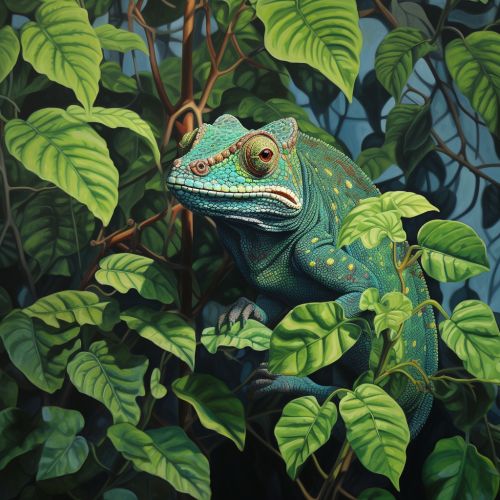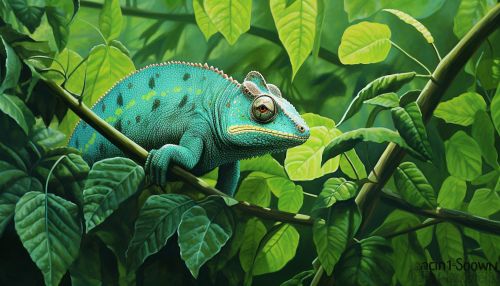Animal Camouflage
Introduction
Animal camouflage is a complex and fascinating aspect of the natural world. It involves the use of coloration, patterns, and behaviors to blend into the surrounding environment, making an organism difficult to detect by predators or prey. This strategy is employed by a wide range of species across the animal kingdom, from insects to mammals, and has evolved independently in different lineages, demonstrating its effectiveness as a survival strategy.
Types of Camouflage
There are several distinct types of animal camouflage, each with its unique characteristics and uses.
Cryptic Coloration
Cryptic coloration, also known as concealing coloration, is the most common form of camouflage. It involves an animal's coloration matching the colors of its environment, making it difficult to distinguish from its surroundings. This type of camouflage is used by both predators, to avoid detection by their prey, and prey, to avoid being seen by predators.


Disruptive Coloration
Disruptive coloration involves the use of bold, contrasting patterns to break up the outline of an animal's body, making it difficult to recognize its shape. This type of camouflage is often used by animals that live in environments with complex visual backgrounds, such as forests or coral reefs.
Mimicry
Mimicry involves an animal resembling another organism or object in its environment. This can be used by prey species to appear less appealing to predators, or by predators to appear harmless to their prey.
Countershading
Countershading involves an animal having a darker color on the upper side of its body and a lighter color on the underside. This helps to counteract the effect of sunlight, making the animal appear flat and less three-dimensional, and therefore harder to detect.
Evolution of Camouflage
The evolution of animal camouflage is a fascinating area of study in the field of evolutionary biology. It provides clear examples of natural selection in action, as animals with better camouflage are more likely to survive and reproduce, passing on their advantageous traits to future generations.
Camouflage in Different Animal Groups
Different groups of animals use camouflage in different ways, reflecting the diverse environments in which they live and the unique challenges they face.
Insects
Many insects use cryptic coloration to blend in with their surroundings. For example, stick insects resemble twigs or leaves, making them difficult to spot among the vegetation.
Birds
Birds use a variety of camouflage strategies. For example, many ground-nesting birds have cryptic plumage to blend in with the soil and vegetation, while some birds of prey use disruptive coloration to break up their outline when seen from below against the sky.
Mammals
Many mammals use camouflage to hide from predators or to sneak up on prey. For example, the snow leopard's spotted coat helps it blend in with the rocky landscapes of Central Asia, while the polar bear's white fur allows it to blend in with the Arctic snow.
Impact on Human Activities
The study of animal camouflage has had a significant impact on human activities, particularly in the fields of military and fashion. For example, the concept of disruptive coloration has been used in the design of military uniforms and equipment to make soldiers harder to spot in the field.
See Also
References
1. Cott, H. B. (1940). Adaptive Coloration in Animals. Oxford University Press. 2. Stevens, M., & Merilaita, S. (2009). Animal Camouflage: Mechanisms and Function. Cambridge University Press. 3. Caro, T. (2017). The Functions of Animal Coloration. Princeton University Press.
